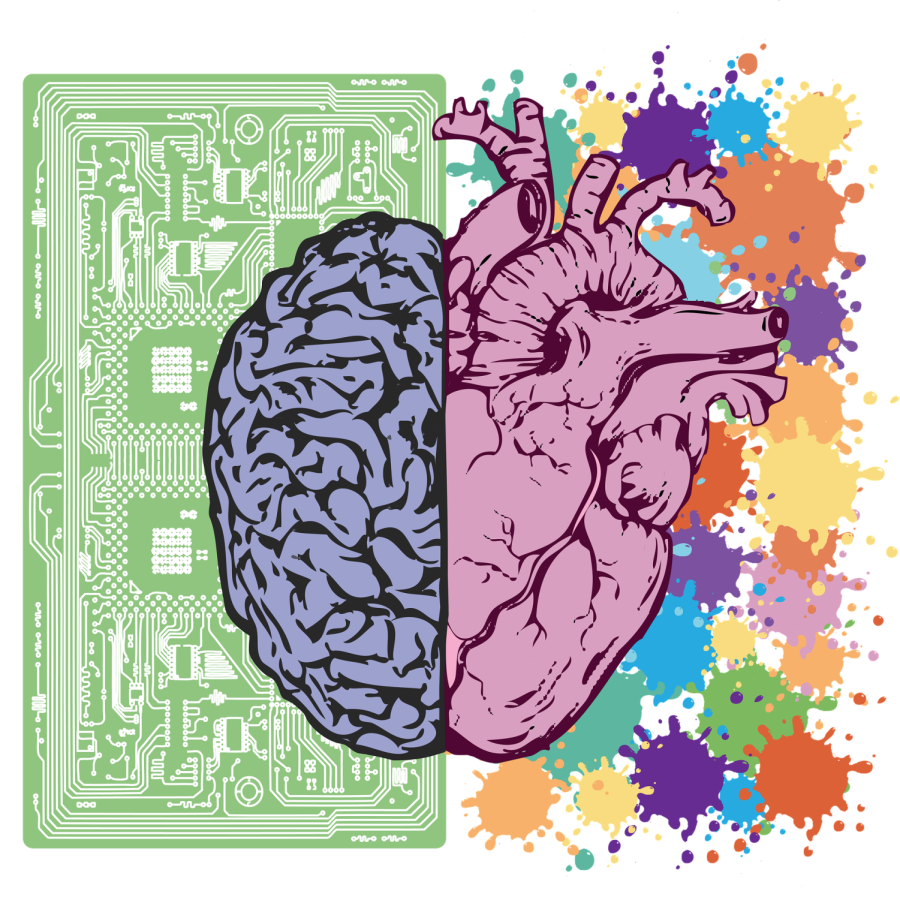Emotional Intelligence Can Protect Your Heart, According to a Cardiologist
According to research, our emotions and moods have a physical impact on our hearts over time—and mindfulness skills help us emphasize the types of emotions that can nurture and protect the heart.
May 20, 2022
The heart has been portrayed as the seat of our emotions for millennia. While this imagery has become popular in art and literature, modern neuroscience and cardiovascular research has only recently begun to investigate the relationship between human emotions and physical health.
Our emotions and moods literally shape our hearts over time. Just as we now know that specific practices can rewire our brain’s connections (a process known as neuroplasticity), the structure and function of the heart may change in response to our emotions: one form of a process known as cardiac plasticity.
Mindfulness and A Strong Heart

Difficult emotions have been shown to harm the physical heart. A 2014 meta-analysis of 30 prospective studies (40 independent reports) with 893,850 participants and follow-ups ranging from 2 to 37 years discovered that depression predicted an increased risk of developing coronary heart disease or having a heart attack. Anxiety, traumatic events, anger, frustration, and unrelenting job stress all pose similar cardiovascular risks and are most likely linked by a common physiologic pathway.
The most extreme example of negative emotions affecting heart health is stress cardiomyopathy, also known as “broken heart syndrome.” As a result of extreme grief, emotional distress, or surprise, the physical heart weakens and sometimes fails in this condition. Within 24 hours of the death of a loved one, the risk of a heart attack increases 21-fold.
Positive prosocial emotions such as gratitude, optimism, and empathy, on the other hand, have been shown in studies to reduce stress and help the heart achieve a state of balance and calm. Optimism, a sense of purpose in life, and positive affect have all been linked to a lower risk of developing coronary heart disease (CHD). Over the course of eight years, 97,253 healthy women were followed in one large trial. Optimists were found to have a lower risk of CHD, with 30% lower CHD mortality and 14% lower total mortality. Higher levels of cynicism and hostility were found to be associated with a higher risk of death from cancer or other causes.
While we cannot control some aspects of heart health, such as the genes we inherit, understanding the relationship between emotions and cardiovascular health allows us to cultivate emotions that nurture both our emotional and physical hearts.
A Change of Mind

To understand how emotions affect our bodies, we must first understand where they come from.
Many of the factors that contribute to stress reactivity start in the mind. Our thoughts, feelings, and behaviors are determined by our perception and interpretation of events and experiences—the meaning we make consciously or subconsciously.
There are three overlapping mechanistic pathways that connect stressful emotions, psychological well-being, and cardiovascular health in our mind, body, and behavior. Let’s take a quick trip down the mind and heart highway.
Let’s start with where emotions come from, and then we’ll look at the differences between feelings, emotions, and moods.
Emotions—primal, unconscious bodily responses—originate in the limbic centers of the brain (e.g., the amygdala) in a matter of seconds, providing information to the more modern and uniquely human prefrontal cortical centers responsible for meaning-making and planning.
Feelings are created as a result of emotions. Emotions, contrary to popular belief, are distinct from feelings, according to Antonio Damasio, chair in neuroscience and professor of psychology, philosophy, and neurology at the University of Southern California. Damasio defines feelings as the meaning we assign to our emotions based on our memories and beliefs, as well as the subjective labeling of our experiences. For example, if we are asked to speak in public, we may experience emotional responses such as a faster heartbeat, tense muscles, and butterflies in our stomach. Our conscious mind interprets these physical sensations and labels them as a feeling: “fear.”
Moods are groups of emotions and feelings that can last for days or weeks and have no connection to an initial triggering event. When we have recurring emotions and feelings and begin to identify with them (seeing an emotion as part of who we are), we may not be consciously aware of them because they appear to be constant companions rather than information that comes and goes.
How Emotions Motivate Us
 Emotions assist the body in moving toward self-protective action and they connect our brain to our body. They cause a chain reaction of electrical and chemical signals from the brain to travel throughout the body via the autonomic nervous system (ANS). All of our organs are wired to receive physical signals, having receptors on their surfaces. This is why a single emotion, such as stress, can set off signals that cause inflammation and blood platelet activation (the tendency for blood clots), causing our cells to age faster.
Emotions assist the body in moving toward self-protective action and they connect our brain to our body. They cause a chain reaction of electrical and chemical signals from the brain to travel throughout the body via the autonomic nervous system (ANS). All of our organs are wired to receive physical signals, having receptors on their surfaces. This is why a single emotion, such as stress, can set off signals that cause inflammation and blood platelet activation (the tendency for blood clots), causing our cells to age faster.
Emotions also influence brain function, influencing our ability to focus, our thought patterns, our levels of energy/motivation, our ability to sleep, and even our appetite.
This brings us to the final stop on the mind and heart highway: the behaviors triggered by our conscious and unconscious impulses, which are influenced by our emotions. Our mental state influences our inclination for or against self-care, our faithfulness to healthy lifestyle choices, and our chances of developing and maintaining a supportive social network.
Improve Your Heart and Emotional Wellness

According to the American Heart Association, there are seven primary determinants of cardiovascular health. Tobacco use, nutritional choices, level of exercise, body composition, blood pressure, cholesterol, and blood sugar are all factors. How many of these indicators we have depends on where we are on the behavior spectrum (e.g., unhealthy vs. healthy, maladaptive vs. adaptive). These behaviors and shifting parameters can lead to heart-related symptoms and adverse health events, or a lack thereof, over time.
While we cannot draw clear lines between our mental and physical health, understanding the link between our emotional state and health-related behaviors can help us improve our heart and overall health. We can literally help protect our hearts by learning to become mindfully aware of our inner state.
Sources:
Allan, David G. “How to Become More Grateful, and Why That Will Make You Happier, Healthier and More Resilient.” CNN, Cable News Network, 19 May 2022, https://www.cnn.com/2022/05/19/health/gratitude-wisdom-project-chasing-life-wellness/index.html.
“Broken Heart Syndrome (Takotsubo Cardiomyopathy): Symptoms & Treatments.” Cleveland Clinic, https://my.clevelandclinic.org/health/diseases/17857-broken-heart-syndrome.
Calechman, Steve, et al. “You Are Not Your Moods.” Mindful, 23 Nov. 2021, https://www.mindful.org/you-are-not-your-moods/.
Gan, Yong, et al. “Depression and the Risk of Coronary Heart Disease: A Meta-Analysis of Prospective Cohort Studies – BMC Psychiatry.” BioMed Central, BioMed Central, 24 Dec. 2014, https://bmcpsychiatry.biomedcentral.com/articles/10.1186/s12888-014-0371-z.
“Limbic System: Amygdala (Section 4, Chapter 6) Neuroscience Online: An Electronic Textbook for the Neurosciences: Department of Neurobiology and Anatomy – the University of Texas Medical School at Houston.” Limbic System: Amygdala (Section 4, Chapter 6) Neuroscience Online: An Electronic Textbook for the Neurosciences | Department of Neurobiology and Anatomy – The University of Texas Medical School at Houston, https://nba.uth.tmc.edu/neuroscience/m/s4/chapter06.html.
Low, Phillip. “Overview of the Autonomic Nervous System – Brain, Spinal Cord, and Nerve Disorders.” Merck Manuals Consumer Version, Merck Manuals, 18 Apr. 2022, https://www.merckmanuals.com/home/brain,-spinal-cord,-and-nerve-disorders/autonomic-nervous-system-disorders/overview-of-the-autonomic-nervous-system.
“My Life Check: Life’s Simple 7.” Www.heart.org, 14 July 2021, https://www.heart.org/en/healthy-living/healthy-lifestyle/my-life-check–lifes-simple-7.
Neuroplasty: Your Questions, Answered – Spineuniverse. https://www.spineuniverse.com/treatments/neuroplasty-your-questions-answered.
Sin, Nancy L. “The Protective Role of Positive Well-Being in Cardiovascular Disease: Review of Current Evidence, Mechanisms, and Clinical Implications.” Current Cardiology Reports, U.S. National Library of Medicine, Nov. 2016, https://www.ncbi.nlm.nih.gov/pmc/articles/PMC5060088/.
